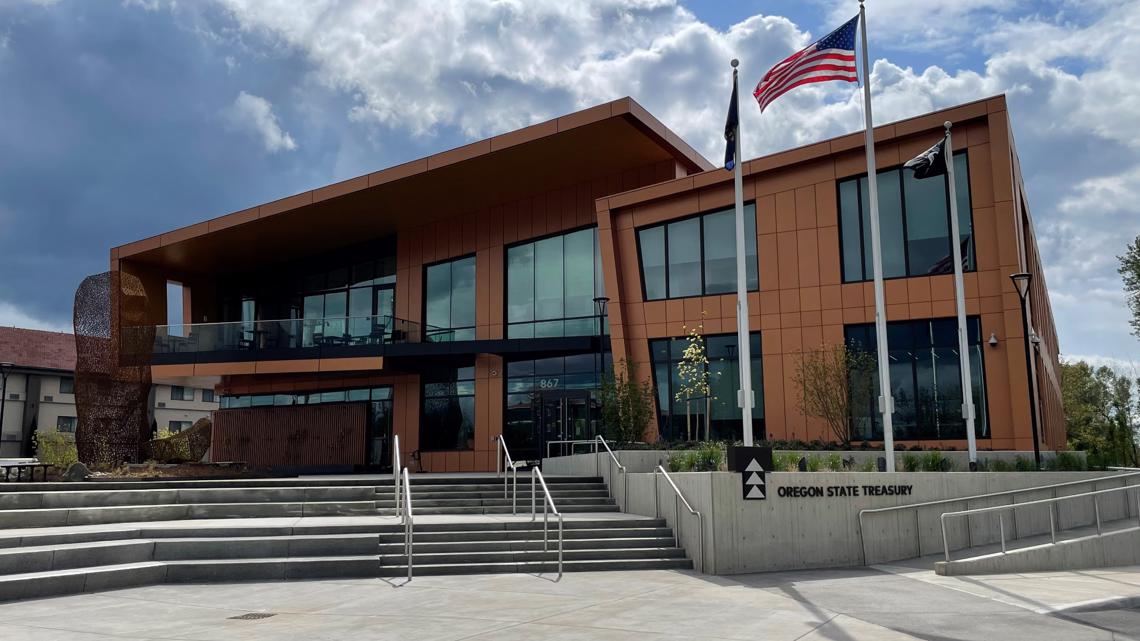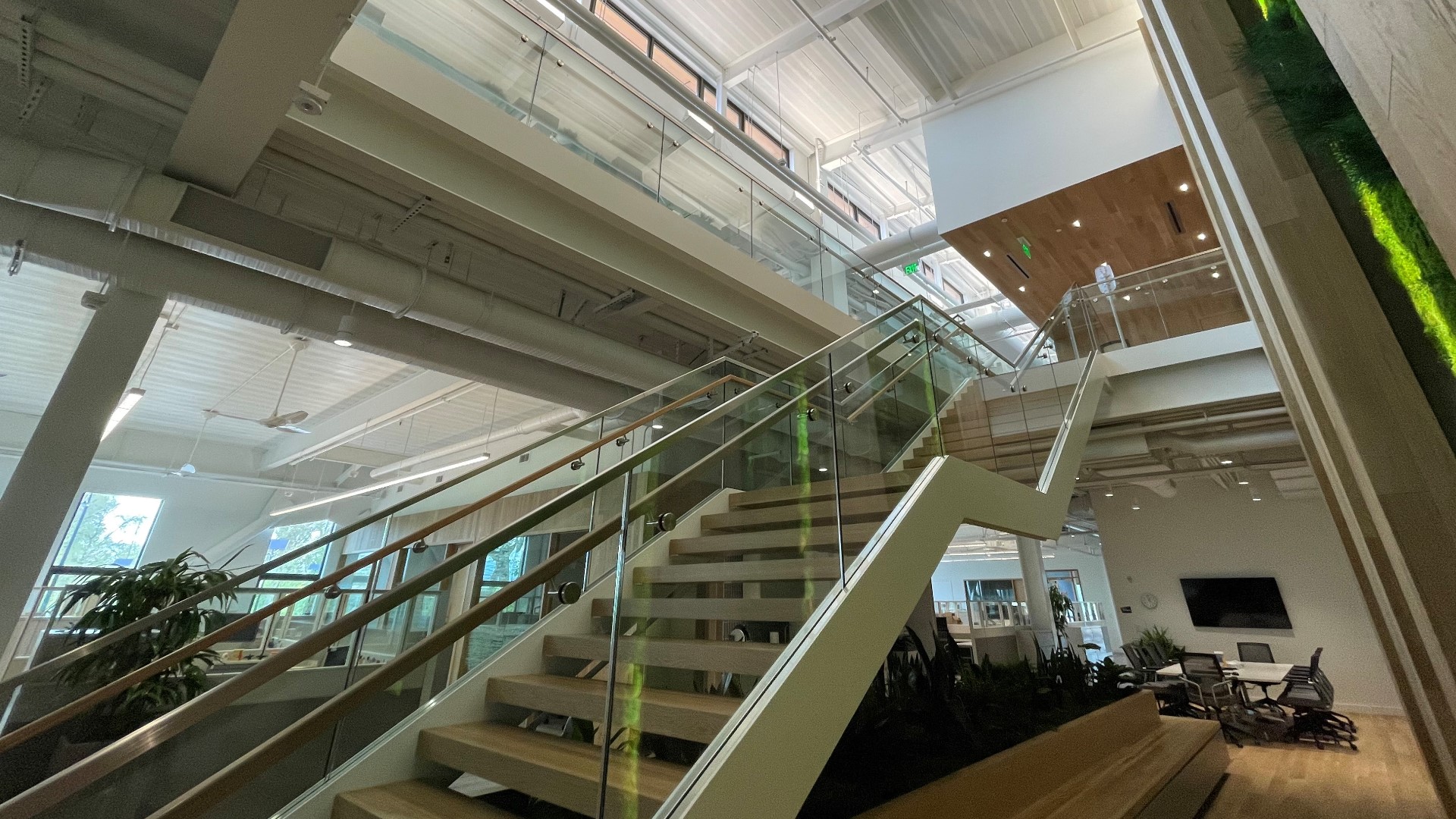SALEM, Ore. — The brand-new Oregon State Treasury building is an architectural marvel, with millions of dollars of safety upgrades designed to withstand a major earthquake and laundry list of other potential disasters, but the average person passing by might not know it. The state-of-the-art building sits just off Highway 22 in southeast Salem, behind a Denny's parking lot.
Its safety features even caught national attention with a feature in the New York Times.
Michael Kaplan, Oregon’s Deputy State Treasurer, accompanied KGW on a tour of the unique building.
“Our intent was an exercise in imagination,” said Kaplan, about plans for the building.
It was constructed to withstand not only the predicted 9.0 Cascadia subduction zone earthquake, but all sorts of disasters, from wind and ice storms to fires and even civil unrest.
“Having a building that would support Treasury’s functions throughout any kind of disaster is what we were aimed at,” Kaplan said.
“The old building we were in, we had no confidence that it would be standing after an earthquake.”


Kaplan said the roughly 34,000 square foot building can go into “full island mode,” where the entire place could become completely self-sufficient for 80 to 100 Treasury staff in a disaster for at least 96 hours. That time could be extended. That depends on energy use and the number of people inside the building.
“The idea here is that we can withstand virtually anything and have a building that has functional water, power, that can support life within the building,” Kaplan said.
He said the building has battery backups, diesel, solar panels and a backup well for water. Fresh air is also continuously filtered and pumped inside.
The first stop on the walking tour showcased the base isolators in the basement of the building. They’re contraptions that keeps the building safe and operational if and when “the big one” hits.
“A traditional building is anchored to the ground. What a base isolator does is it lifts the building and then puts an elastic layer in between where the building is anchored to the ground and the actual structure itself,” said Kaplan.
That means the building doesn’t actually touch the ground. In the basement, the elevator shaft floats above the foundation. Think of base isolators as really big shock absorbers, designed to reduce shaking in the event of an earthquake by up to 75%.
In addition, the structures inside the building are built to move as the building sways in an earthquake.
“In this case, 18 inches horizontally, a foot-and-a-half in any direction, so it can absorb the shaking and the energy of the earthquake.”
Throughout the rest of the building, the exposed piping is noticeable overhead. Kaplan said the design was intentional, not only reducing the overall weight of the building but also allowing speedier visual inspection of the ducts and other structures immediately after an earthquake.
A hand-painted mural inside the building pays homage to Indigenous cultures and lands.
The windows in the building look normal to the average eye, but they’re also meant to withstand impact if there’s civil unrest. They also bring in more natural light to lessen energy consumption, allowing backup power sources to last longer. The next stop on the tour was the roof, where the building’s solar panels are located.
“A major resiliency feature is our ability to generate our own electricity. So, we do that primarily through solar,” said Kaplan.
"Additionally, as a sustainability feature, so far we’re not consuming energy of the grid, we're actually contributing to it. So only been open a month but we have yet to take energy off the grid,” Kaplan said.
“We're completely below net zero actually.”
According to Byron Williams, the chief administrative officer at the Oregon State Treasury, nine months out of the year, the building generates enough solar power to fuel operations. Some of the battery and diesel may be used for the remaining three months of the year.
So, why the treasury building? Kaplan said the state treasurer spearheaded the effort knowing the Oregon State Treasury is at the center of everything the state does. The Treasury is also responsible for making sure state employees get paid.
Kaplan said in addition to a disaster-resistant building, software products were moved to the cloud and the state made sure employees had laptops and could be mobile, all to make sure they’d be prepared in an emergency. For instance in an emergency, like a fire, frontline crews would need funding.
“If we had a disaster and FEMA wanted to send money to Oregon, if the treasury’s not up we can’t accept that money. So we are literally at the heart of everything that comes in or goes out of the state so nothing functions statewide, from a finance perspective, if we're not here,” Kaplan said.


Like many other state agencies, the treasury is a tenant in the building. It’s leasing the space from a developer who pumped about $40 million into the roughly two-year building process. Kaplan said the agreement is for the Oregon State Treasury to stay a tenant for the next 100 years.
“It was a public-private partnership in the best possible sense,” said Kaplan.
While the building is complete, the planning continues as staff build up a stockpile of drinkable water, emergency food and even satellite phones.
Kaplan said the treasury is the only state agency operating out of a disaster-resistant building. He said the hope is for other state, local, and federal agencies to start thinking about how to move toward more sustainable and resilient buildings so that important government functions can continue during a disaster.
“We have to make investments. We have to take the risk to do these types of things to prepare for what we know is inevitable.”

